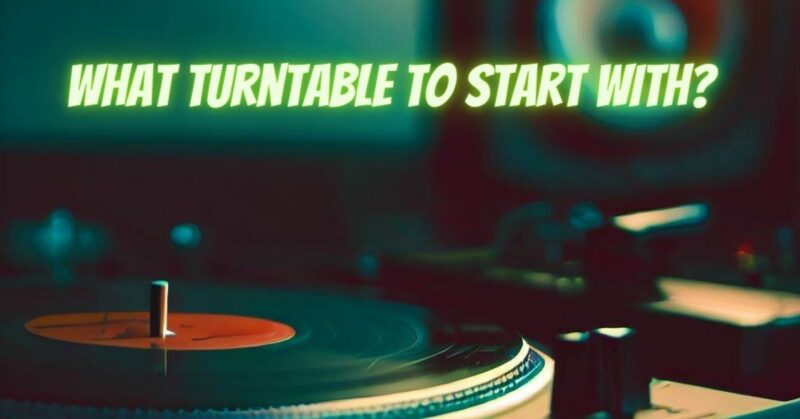Stepping into the enchanting world of vinyl records is a nostalgic and rewarding experience. The crackle of the needle, the warmth of analog sound, and the tangible connection with music create a unique and immersive listening journey. If you’re eager to start your own vinyl adventure but unsure where to begin, fear not! In this article, we’ll guide you through the process of choosing the perfect turntable to start with, ensuring your entry into the realm of vinyl is seamless and enjoyable.
1. Budget Considerations: As with any endeavor, establishing a budget is the first step in choosing your turntable. Turntables are available at various price points, from affordable entry-level options to high-end audiophile models. Determining your budget will narrow down your choices and help you find a turntable that suits your financial capacity.
2. Manual or Automatic Operation: Turntables come in two main types of operation: manual and automatic. Manual turntables require the user to manually lift and place the needle on the record and return it at the end of playback. Automatic turntables, on the other hand, have mechanisms that handle these tasks with the press of a button. Beginners often find automatic turntables more user-friendly, as they reduce the risk of mishandling the delicate needle.
3. Built-in Phono Preamp: A phono preamp (also known as a phono stage) is essential for amplifying the low-level signal produced by the turntable’s cartridge. Some turntables come with a built-in phono preamp, while others require an external phono preamp or a receiver with a phono input. If you opt for a turntable without a built-in preamp, make sure you have a compatible phono preamp in your audio setup.
4. Cartridge Quality: The cartridge is the component that houses the stylus (needle) and reads the grooves on the vinyl record. The quality of the cartridge significantly impacts sound quality and tracking ability. Some turntables come with pre-installed cartridges, while others allow for cartridge upgrades. Entry-level turntables usually have a basic cartridge, but it’s possible to upgrade to a higher-quality cartridge as your vinyl journey progresses.
5. Belt-Drive or Direct-Drive: Turntables can be classified into two drive types: belt-drive and direct-drive. Belt-drive turntables use a rubber belt to drive the platter, which isolates the motor’s vibrations from the platter, reducing noise. Direct-drive turntables have the motor directly connected to the platter, offering better torque and stability. Both types have their advantages, and the choice comes down to personal preference and the level of isolation desired.
6. Extra Features: Consider any additional features you may want in your turntable, such as USB connectivity for digitizing vinyl, Bluetooth for wireless streaming, or adjustable speed settings for playing 78 RPM records. While these features may not be necessary for beginners, they can offer added versatility and convenience.
7. Research and Reviews: Before making your final decision, read reviews and conduct thorough research on different turntable models. Pay attention to user feedback and expert reviews to gauge the overall performance and reliability of the turntable you are considering.
Choosing the right turntable to start with is an exciting and crucial step in your vinyl journey. Remember that there is no one-size-fits-all solution, and the best turntable for you is the one that aligns with your budget, preferences, and needs. Whether you opt for an entry-level turntable with user-friendly features or decide to invest in a higher-quality model, the magic of vinyl awaits you with its timeless charm and captivating sound. So, take the plunge, immerse yourself in the melodies, and let the vinyl lead you on a musical adventure like no other. Happy spinning!


